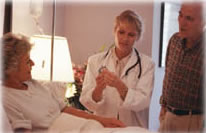 Leg Stress Fracture, Tibia Leg Stress Fracture, Tibia |
 Liver Injury Liver Injury |
 Neck Dislocation Neck Dislocation |
 Neck Fracture Neck Fracture |
 Neck Sprain Neck Sprain |
 Neck Strain Neck Strain |
 Nose Injury Nose Injury |
 Pelvis Strain, Hip-Trunk Pelvis Strain, Hip-Trunk |
 Pelvis Strain, Ischium Pelvis Strain, Ischium |
 Perineum Contusion Perineum Contusion |
 Rib Dislocation Rib Dislocation |
 Rib Fracture Rib Fracture |
 Rib Sprain Rib Sprain |
 Rib Strain Rib Strain |
 Shoulder-Blade (Scapula) Bursitis Shoulder-Blade (Scapula) Bursitis |
 Shoulder-Blade (Scapula) Contusion Shoulder-Blade (Scapula) Contusion |
 Shoulder-Blade Fracture, Acromion Shoulder-Blade Fracture, Acromion |
 Shoulder-Blade (Scapula) Fracture, Coracoid Process Shoulder-Blade (Scapula) Fracture, Coracoid Process |
 Shoulder-Blade (Scapula) Fracture, Glenoid Fossa Shoulder-Blade (Scapula) Fracture, Glenoid Fossa |
 Shoulder-Blade (Scapula) Fracture, Neck Shoulder-Blade (Scapula) Fracture, Neck |
 Shoulder-Blade (Scapula) Strain Shoulder-Blade (Scapula) Strain |
 Shoulder Bursitis, Gleno-Humeral Shoulder Bursitis, Gleno-Humeral |
 Shoulder Bursitis, Subacromial Shoulder Bursitis, Subacromial |
 Shoulder Contusion Shoulder Contusion |
 Shoulder Dislocation Shoulder Dislocation |
 Shoulder Sprain, Acromio-Clavicular Shoulder Sprain, Acromio-Clavicular |
 Shoulder Sprain, Gleno-Humeral Shoulder Sprain, Gleno-Humeral |
 Shoulder Strain Shoulder Strain |
 Shoulder Tendinitis & Tenosynovitis Shoulder Tendinitis & Tenosynovitis |
 Skin Abrasion Skin Abrasion |
 Skin Laceration Skin Laceration |
 Skin Puncture Wound Skin Puncture Wound |
 Spine Fracture, Lower Thoracic & Lumber Region Spine Fracture, Lower Thoracic & Lumber Region |
 Spine Fracture, Sacrum Spine Fracture, Sacrum |
 Spine Fracture, Tailbone Spine Fracture, Tailbone |
 Spine Stress-Fracture, Neck or Back Spine Stress-Fracture, Neck or Back |
 Spleen Rupture Spleen Rupture |
 Thigh-Bone Fracture Thigh-Bone Fracture |
 Thigh Contusion Thigh Contusion |
 Thigh Hematoma Thigh Hematoma |
 Thigh Injury, Hamstring Thigh Injury, Hamstring |
 Thigh Strain, Quadriceps Thigh Strain, Quadriceps |
 Thigh Strain Thigh Strain |
 Thumb Fracture Thumb Fracture |
 Thumb Sprain Thumb Sprain |
 Toe Dislocation Toe Dislocation |
 Toe Exostosis Toe Exostosis |
 Toe Fracture Toe Fracture |
 Tooth Injury & loss Tooth Injury & loss |
 Wrist Contusion Wrist Contusion |
 Wrist Dislocation, Lunate Wrist Dislocation, Lunate |
 Wrist Dislocation, Radius or Ulna Wrist Dislocation, Radius or Ulna |
 Wrist Ganglion Wrist Ganglion |
 Wrist Sprain Wrist Sprain |
 Wrist Strain Wrist Strain |
 Wrist Tenosynovitis Wrist Tenosynovitis |
|
|
Wrist Ganglion
A small, usually hard nodule lying directly over a tendon or a joint capsule on the back or front of the wrist. Occasionally the nodule may become quite large. Wrist ganglions are quite common.
Body Parts Involved
- Back or front of the wrist.
- Tendon sheath (a thin membranous covering to any tendon).
- Any of the joint spaces in the wrist.
Causes
-
Mild sprains and chronic sprains of the wrist, causing weakness of the joint capsule.
- A defect in the fibrous sheath of the joint or tendon that permits a segment of underlying synovium (thin membrane that lines the tendon sheath) to herniate through it.
- Irritation accompanying the herniated synovium, causing continued secretion of fluid. The sac gradually fills, enlarges, and become hard, forming the ganglion.
Signs & Symptoms
-
Hard lump over a tendon or joint capsule in the wrist. The nodule "yields" to heavy pressure because it is not solid.
- No pain usually, but overuse of the wrist may cause mild pain and aching.
- Tenderness if the lump is pressed hard.
- Discomfort with extremes of motion (flexing or extending) and with repetition of the exercise that produced the ganglion.
Treatment
Note:- Follow your doctor's instructions. These instructions are supplemental.
First Aid
None.This condition develops gradually.
Continuing Care
Immediately after surgery:
- The affected area is usually immobilized in a splint for 1 to 2 weeks following surgery.
- If the wound bleeds during the first 24 hours after surgery, press a clean tissue or cloth to it for 10 minutes.
- A hard ridge should form along the incision. As it heals, the ridge will recede gradually.
- Use an electric heating pad, a heat lamp, or a warm compress to relieve incisional pain.
- Bathe and shower as usual. You may wash the incision gently with mild unscented soap.
- Between baths, keep the wound dry with a bandage for the first 2 or 3 days after surgery. If a bandage gets wet, change it promptly.
- Apply non-prescription antibiotic ointment to the wound before applying new bandages.
- Wrap the hand with an elasticized bandage until healing is complete.
After the incision has healed:
- Use ice massage. Fill a large Styrofoam cup with water and freeze. Tear a small amount of foam from the top so ice protrudes. Massage firmly over the injured area in a circle about the size of a baseball. Do this for 15 minutes at a time, 3 or 4 times a day, and before workouts or competition.
- You may apply heat instead of ice if it feels better. Use heat lamps, hot soaks, hot showers, heating pads, or heat liniments and ointments.
- Take whirlpool treatments, if available.
Medication
- Your doctor may prescribe pain relievers. Don't take prescription pain medication longer than 4 to 7 days. Use only as much as you need.
- You may use non-prescription drugs such as acetaminophen for minor pain.
Home Diet
During recovery, eat a well-balanced diet that includes extra protein, such as meat, fish, poultry, cheese, milk and eggs. Increase fiber and fluid intake to prevent constipation that may result from decreased activity.
Diagnostic Measures
-
Your own observation of signs and symptoms.
- Medical history and physical examination by a
doctor.
- X-rays of the area to rule out a bone tumor or unhealed bone fracture.
Prevention Tips
- Participate in a long-term strengthening and conditioning program appropriate for sport.
- Warm up before practice or competition.
|
|





